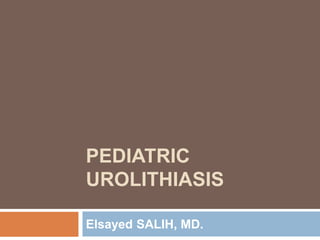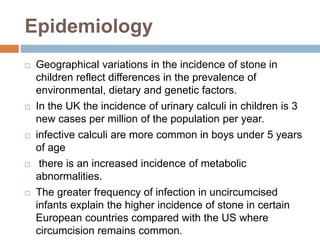This document provides an overview of pediatric urolithiasis (urinary stones in children). Some key points:
- Infection and metabolic abnormalities are major causes of stones in children.
- Metabolic evaluation is essential for every child to identify underlying conditions.
- Stones are most commonly calcium-containing, struvite, or uric acid.
- Common metabolic abnormalities include hypercalciuria, hyperoxaluria, cystinuria, and hypocitraturia.
- Treatment involves managing the underlying condition, increasing fluid intake, and sometimes surgery or lithotripsy as in adults. Thorough evaluation is needed to identify causes and guide management.











































































































